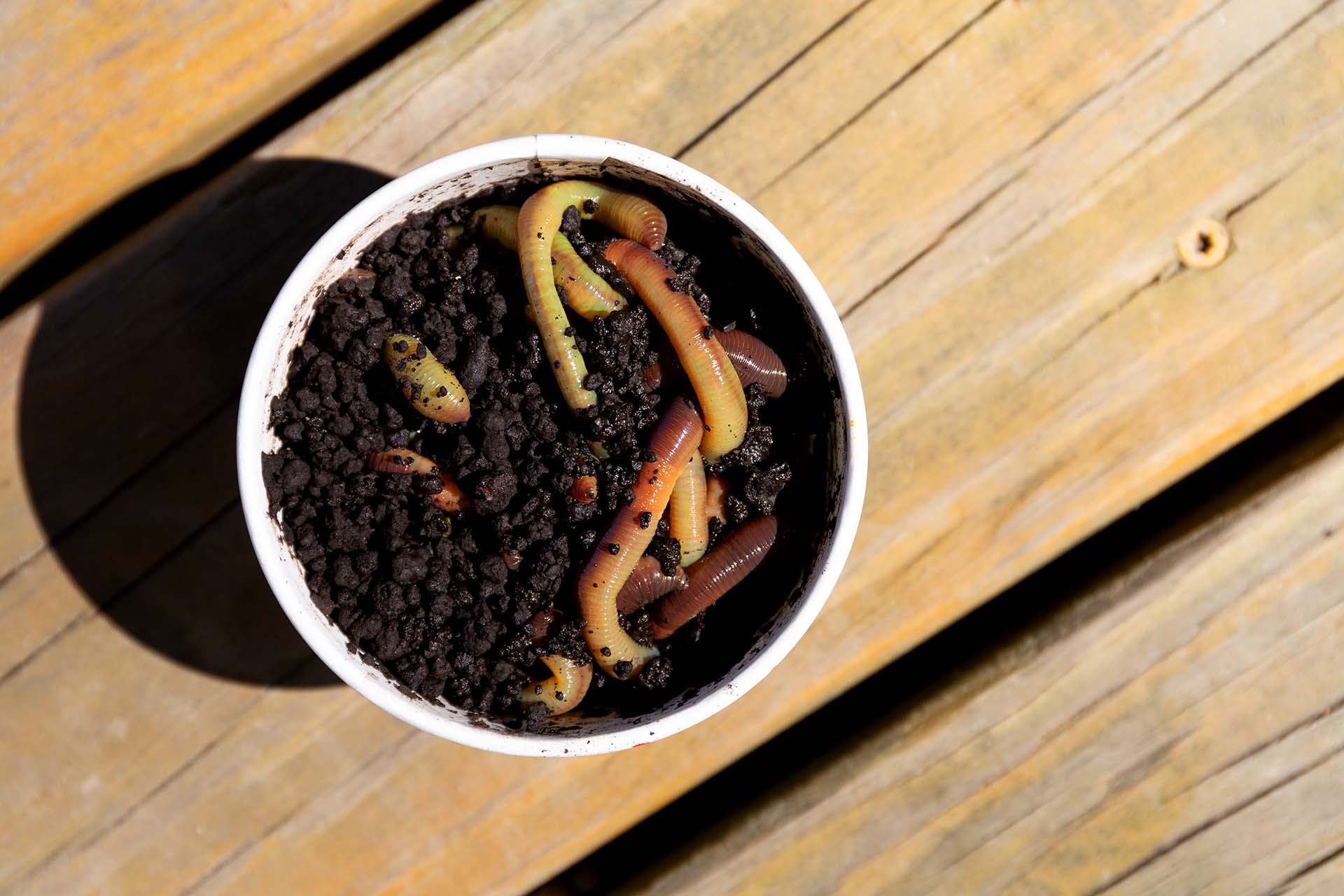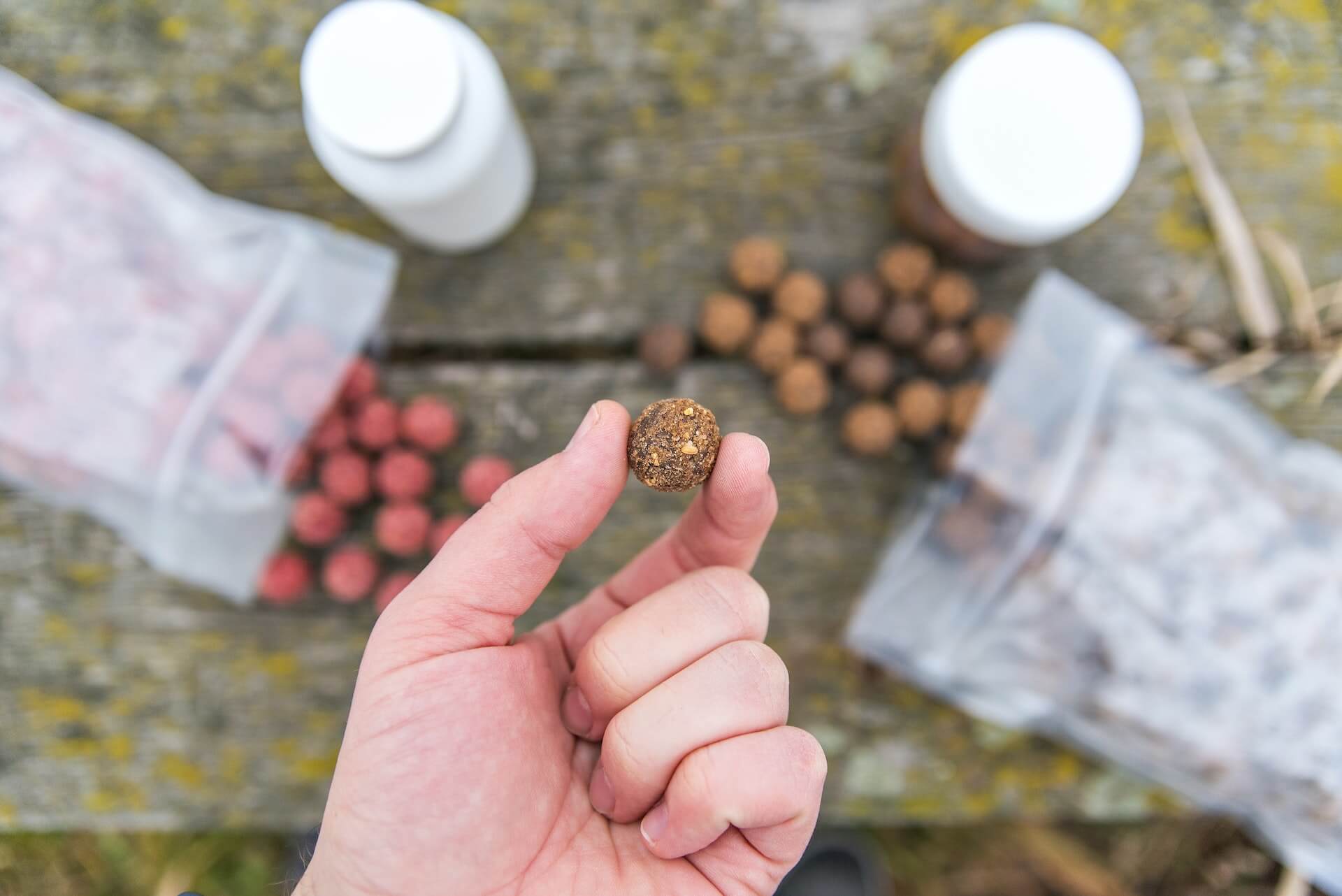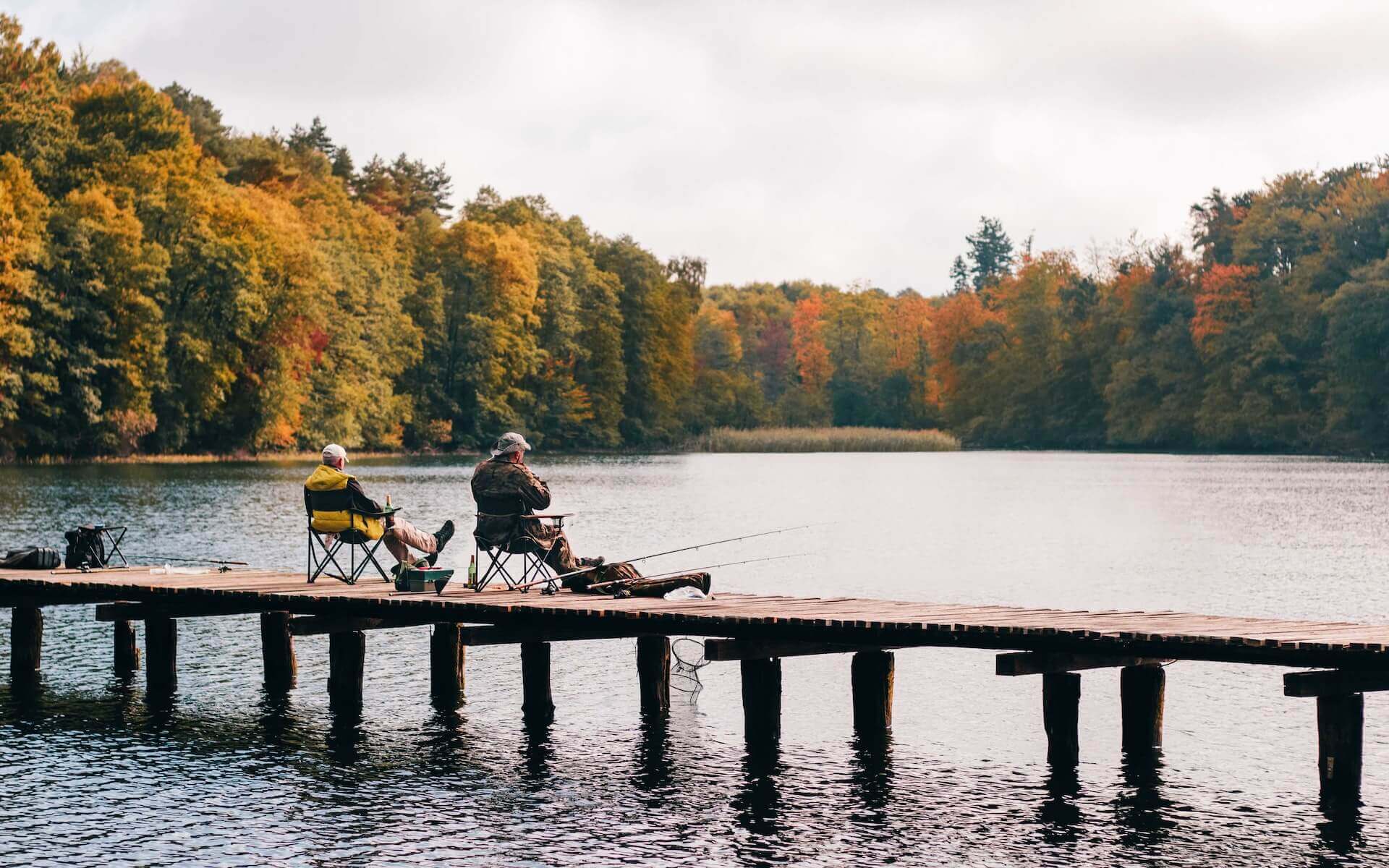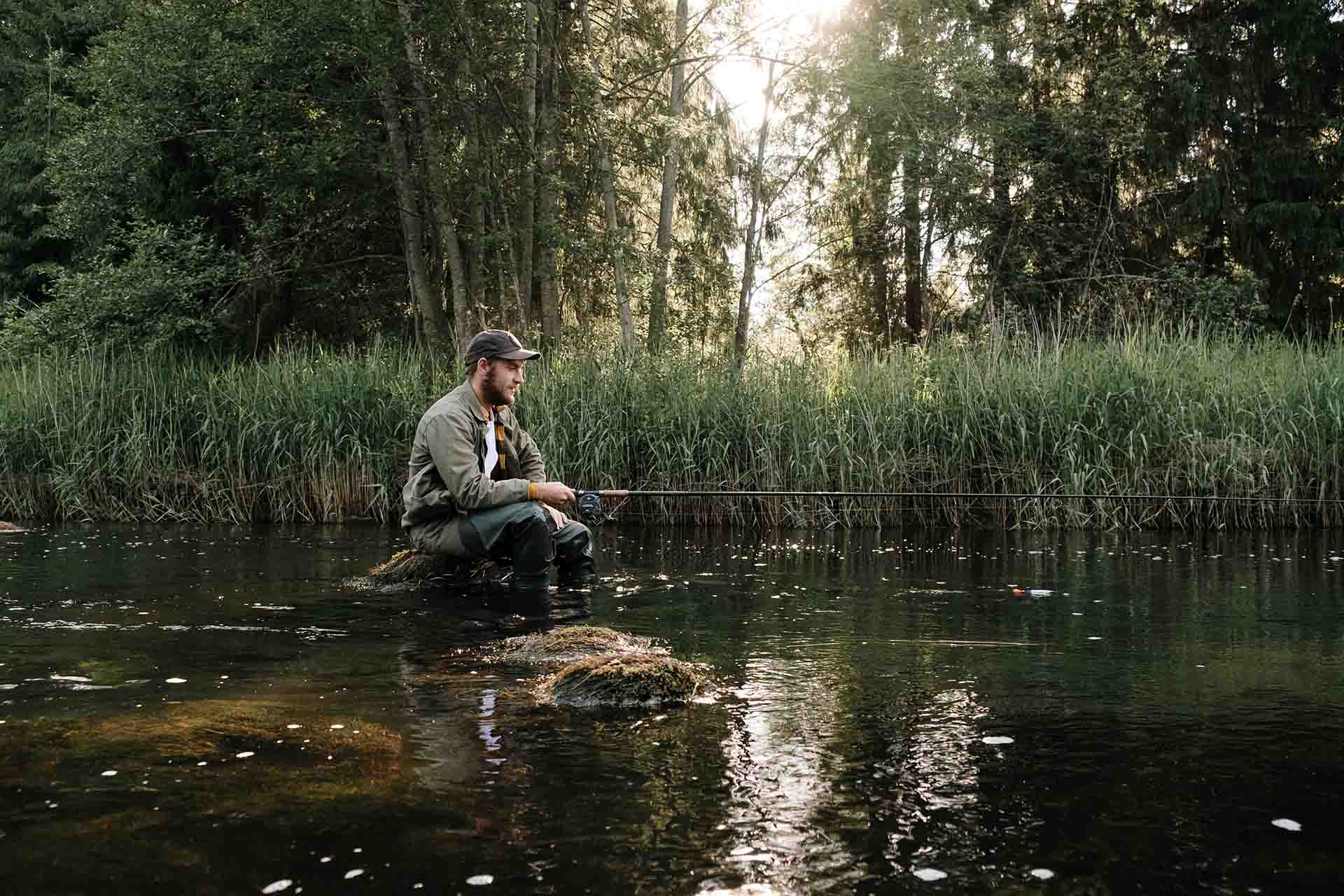Have you ever gone fishing only to be left frustrated when your bait kept decaying and spoiling, making it less effective? There’s no need to worry – it happens to the best of us. Figuring out how to keep your bait fresh is not that complicated. This comprehensive guide will provide you with everything you need to know about buying, storing, and transporting your live tackle to ensure a bountiful day spent out on the water.
Maintaining bait’s freshness is all about knowing the optimal temperature conditions and moisture levels of a certain organism you’re using to entice your targets. Creating damp bedding for worms and nightcrawlers, as well as maintaining the water’s oxygen levels for minnows, is also vital for keeping them alive. All in all, once you understand the conditions each organism thrives in, you’ll be able to create suitable conditions for keeping them alive.
Why Is It Important to Know How to Keep Live Bait Alive and Fresh?
No matter if you’re a beginner angler or a seasoned fisherman, the importance of fresh bait in fishing is pretty clear. That’s why learning how to keep bait fish alive should be one of the top priorities of every angler, no matter what fishing technique they prefer – it truly can make or break your experience out on the water.
How Fresh Bait Increases the Chances of a Successful Catch
The benefits of using fresh bait are all about attracting your target fish species in the most effective way possible. If it’s preserved, the natural odors will act as powerful signals to nearby creatures, and the alluring aroma will draw them closer in search of food.
Moreover, it maintains the natural texture and appearance, closely resembling live prey and additionally enticing the target to take a bite on the fish hook. That’s because this lifelike presentation triggers the instinctive response in fish, making them more likely to strike. Therefore, keeping bait fish alive can significantly improve your odds of a successful catch and make your overall experience more rewarding.

What Types of Fishing Bait Are There?
Before I get into all the tips and tricks concerned with keeping it preserved, here’s an overview of the most common types of bait used in various fishing styles:
| Type | Overview | Potential Targets |
|---|---|---|
| Live Baits | Natural organisms such as worms and minnows | Bass, trout, catfish, panfish, pike, walleye |
| Frozen Baits | Preserved organisms that are typically stored in a freezer | Saltwater fish such as snapper or grouper |
| Artificial Lures | Man-made fishing devices mimicking prey | Various fish species based on lure type |
| Dough Baits | A mixture of flour, cornmeal, and attractants | Carp, catfish, trout |
| Cut Baits | Slices or chunks of fish | Saltwater fish like sharks, snapper, or catfish |
| Insects | Live or artificial insects like crickets | Trout, panfish, bass, perch, bluegill |
| Power Baits | Scented, dough-like baits in various colors | Trout, catfish, panfish |
| Spinnerbaits | Lures with metal blades that spin in the water | Bass, pike, muskie, walleye |
| Jigs | Lead-headed lures with soft plastic bodies | Bass, crappie, walleye, trout |
| Surface Lures | Floating lures designed to stay on the water's surface | Bass, pike, muskie |
How to Keep Your Bait Fresh – Storage Techniques You Should Consider
As you can see from the table above, there are plenty of different baits, each with its own advantages when it comes to specific techniques and conditions. Not all of them are alive, though, so there’s no need to know how to preserve them effectively – for some, a well-organized tackle box will be more than enough.
Proven Methods to Keep Bait Fresh
- Worms – Learning how to keep fishing worms alive is pretty simple. The key is to keep them in a cool environment, ideally between 45°F and 55°F (7°C-13°C) – a refrigerator or a cooler will do just fine. Place them in a container with damp bedding, such as shredded newspaper or peat moss, to maintain moisture levels and prevent them from drying out. Also, make sure to avoid overcrowding, as that could lead to suffocation.
- Minnows – These small freshwater fish require well-oxygenated water, so use an aerated bucket to maintain a steady supply of oxygen and change the water regularly. Keep the water temperature cool but above the freezing point to slow down the metabolism of the minnows and prolong their freshness.
- Nightcrawlers – When it comes to knowing how to keep nightcrawlers alive at home, the key is to provide a damp and cool environment for them. So, place them in a container with damp bedding and keep them in a cool, dark location. Ensure the container has adequate ventilation to allow for air circulation and remember to replace the bedding material frequently.
Techniques for Storing Different Types of Bait
The methods described above clearly indicate that temperature control plays a vital role in preserving baits, as it helps these organisms slow their metabolism and maintain their freshness. Moisture management is also crucial for various baits, so creating damp bedding like soil, newspaper, or moss, as well as frequently changing it, will definitely help.
It’s also essential to avoid contamination by ensuring proper ventilation in containers, preventing overcrowding, and periodically cleaning the storage unit. Keep these efficient techniques in mind, and you will surely maximize the longevity and effectiveness of your baits.

Should You Use Bait Containers and Preservation Tools?
Containers provide a dedicated space to store and transport live organisms, ensuring their safety and minimizing stress during transit. These containers often feature breathable lids or small holes to allow for proper ventilation, preventing baits from suffocating and maintaining their freshness.
Preservation tools, such as aerators or oxygen pumps, also play a vital role in maintaining this freshness by providing adequate oxygenation. Additionally, using tools like coolers or insulated bags can help regulate temperature, keeping baits at the optimal range to slow down their metabolism and extend their viability. Sometimes, a small bait cooler is all you need to ensure the well-being of these organisms.
Here Are the Essential Preservation Tools for Bait
Today’s market offers a wide range of containers and other tools designed to cater to the needs of anglers. Buckets, bags, boxes – there are plenty of options, and some models even have built-in insulation or compartments to keep different organisms separate. I personally use the Frabill Compact Live Bait Container and never had any problems with keeping my worms alive.
When it comes to preservation tools, it’s best to go for devices you can easily transport, such as the Beyond Bubbles Portable Live Bait Aerator. There are also plenty of options on the market when it comes to coolers and insulated bags. If needed, you can also purchase dividers or trays with built-in aerators that will help you conveniently organize and preserve your baits. With such a diverse selection of different preservation tools available, you can choose based on your specific needs and preferences.
Consider Using Some DIY Bait Preservation Techniques
As there are recipes for homemade fish bait, there are also DIY containers, natural preservatives, or homemade storage solutions you could try out. For containers, you can repurpose airtight plastic containers with small holes drilled into them for ventilation. Mason jars or plastic food storage containers can also come in handy, especially for smaller organisms.
When it comes to natural preservatives, consider adding fresh herbs like basil or mint to the container to help deter bacteria and maintain freshness. Improvising storage solutions can involve using items like mesh bags or breathable fabric to create a makeshift bait bag. Just remember to monitor its condition regularly, replace bedding or water as needed, and ensure proper ventilation.

What Are the Best Practices for Bait Freshness?
In addition to utilizing the right containers and tools for preservation, there are a few additional tips I’d like to share with you. First and foremost, it’s crucial to shop for your baits from reputable sources, as it will ensure their quality. Also, make sure to always handle your tackle with clean hands in order to avoid introducing contaminants and minimize exposure to extreme temperatures, as direct sunlight can cause stress or overheating.
The sunlight is not the only thing you need to keep your tackle out of – direct contact with ice can also harm certain organisms. Finally, be mindful of local regulations and required licenses for using, transporting, and disposing of baits. These rules are put into place to prevent the spread of invasive species and protect the environment, so make sure you do your part and utilize sustainable fishing practices.
Bait Rotation and Avoiding Overexposure Are Also Important When Handling Baits
Regularly rotating bait is crucial for ensuring that you always have a fresh and lively tackle on hand, ready to attach to your fish hook. It involves using multiple batches, allowing each of them to rest and recover while you use another.
Besides keeping your hands clean while handling different baits, you should avoid being rough, excessively squeezing them, or hooking bait too aggressively. So, make sure you’re gentle and careful while handling your tackle, as it helps to preserve the bait’s natural appearance and movement, ultimately making it more appealing to your target.
Extreme temperatures can damage baits, but overexposure to water or air can also cause them to become soft, mushy, or lose their effectiveness. So, make sure to avoid leaving it in water for prolonged periods or exposing it to excessive heat or dry air. Implement these methods as part of your regular fishing routine, and you’ll have fresh, lively, and enticing baits, maximizing your chance of bringing in plenty of fishy surprises.

Learn How to Keep Bait Fresh and Keep the Fish Coming for More
Fishing is an amazing and rewarding activity for people of all different backgrounds and interests. Whether you’re doing it competitively or recreationally, having quality tackle is essential for a successful outing. So, don’t let rotting worms ruin your fishing trips – use these tips and tricks to keep your bait as fresh as it can be. The fish are waiting for the delicious treats you’re preparing!








